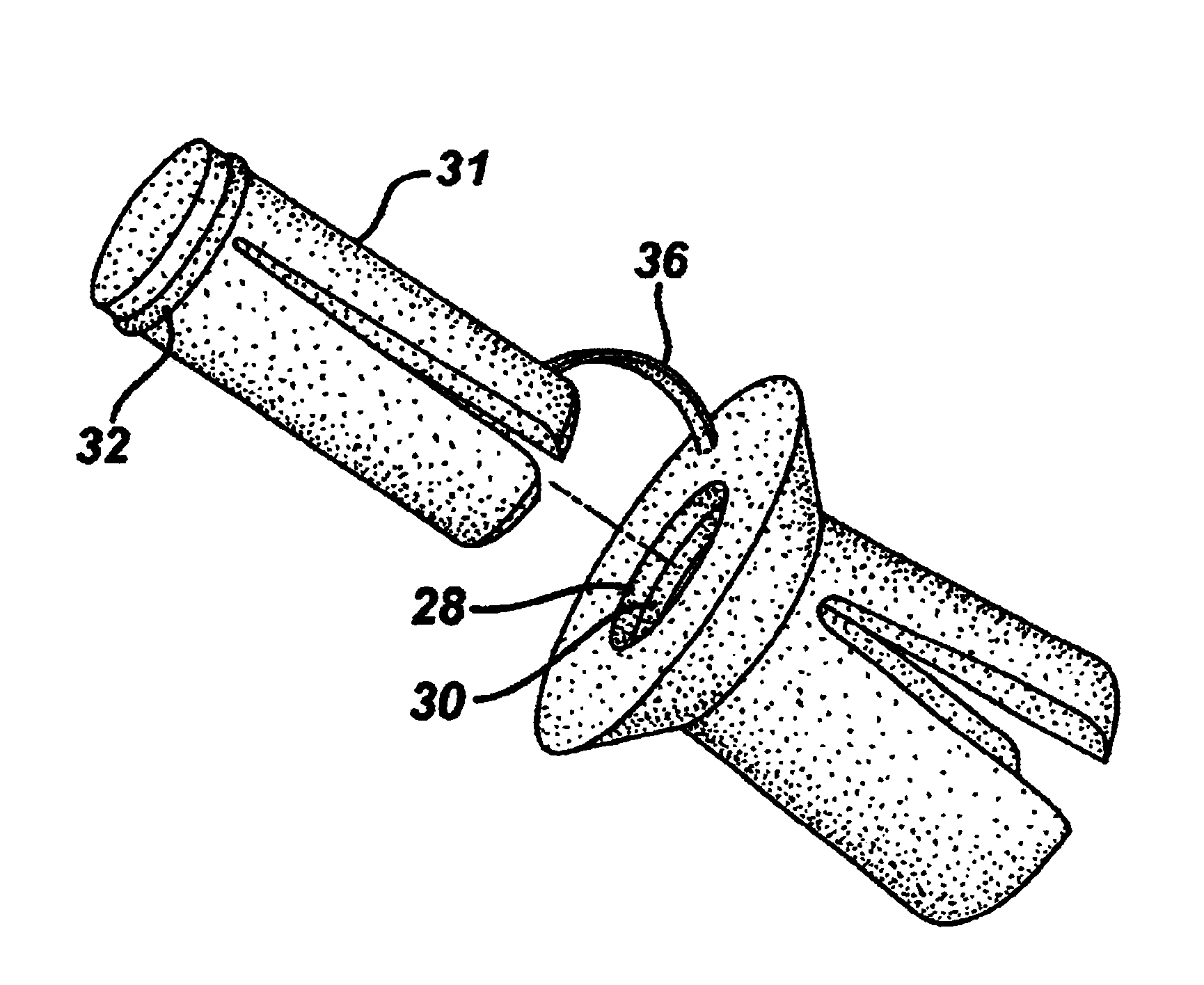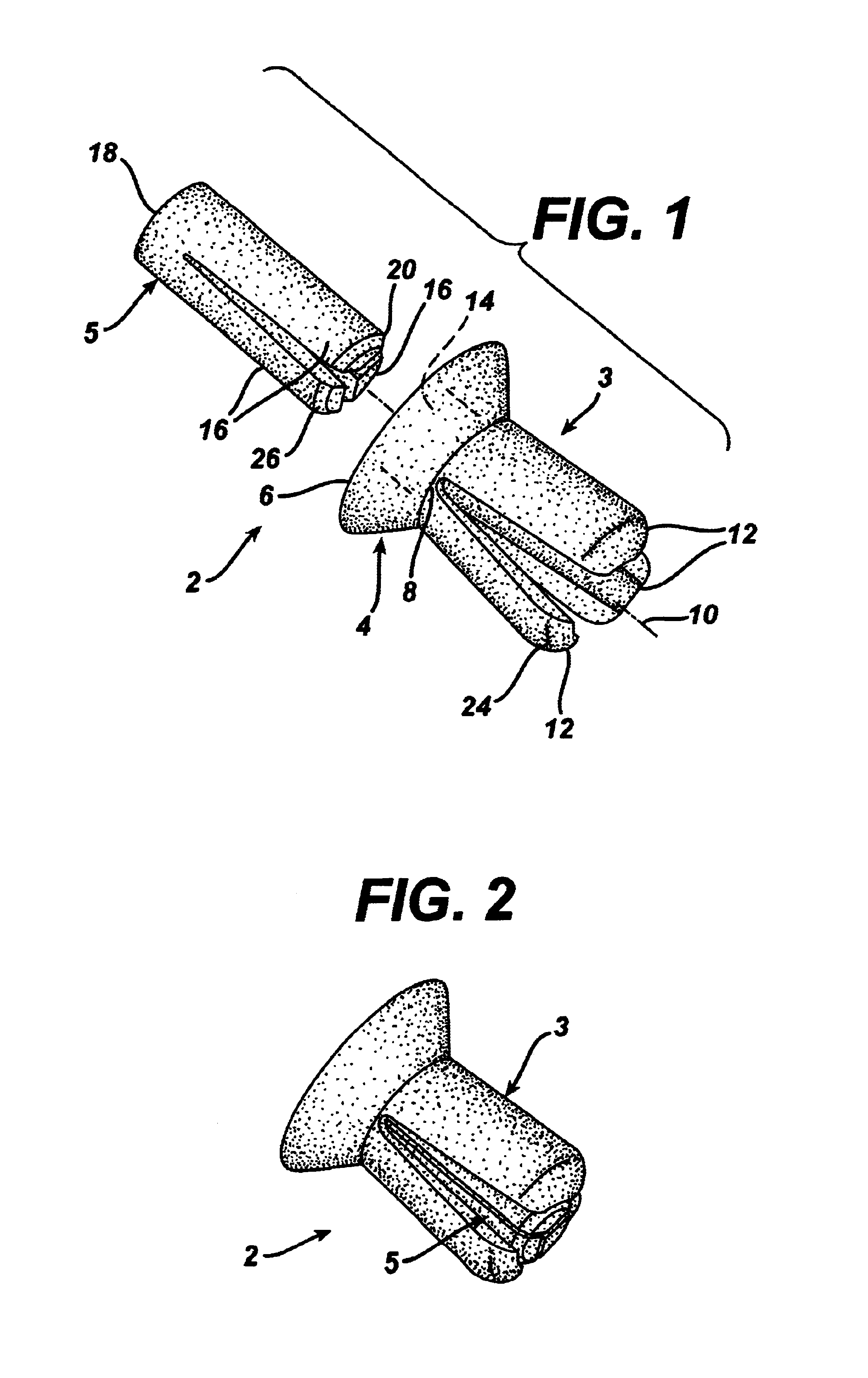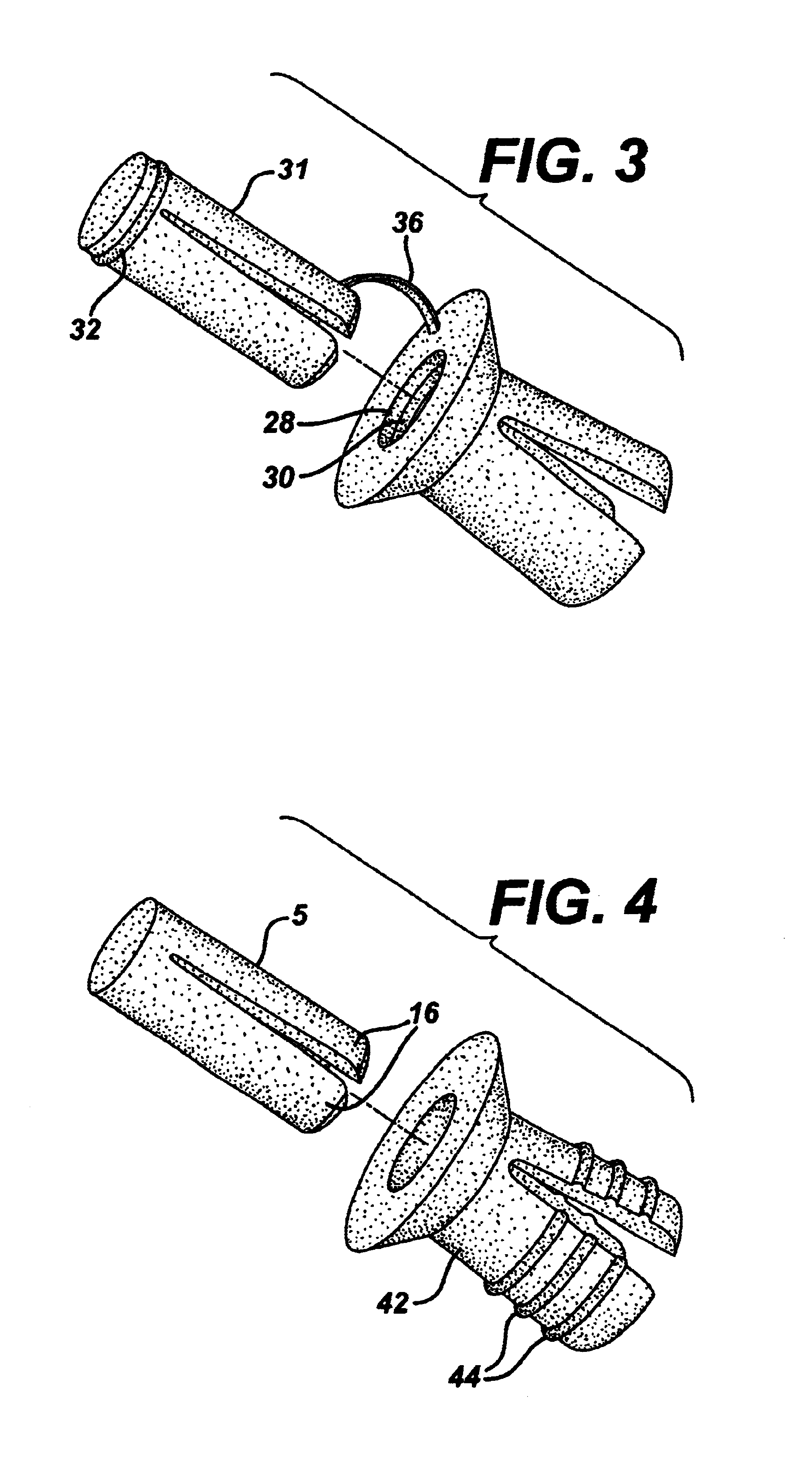One-piece biocompatible absorbable rivet and pin for use in surgical procedures
a biocompatible, surgical technology, applied in the field of surgical devices, can solve the problems of inconvenient installation, inconvenient handling, and permanent removal of the device, and achieve the effects of convenient installation, convenient handling, and enhanced length
- Summary
- Abstract
- Description
- Claims
- Application Information
AI Technical Summary
Benefits of technology
Problems solved by technology
Method used
Image
Examples
example 1
Synthesis of a 85:15 (mol / mol) oly(lactide-co-glycolide) Copolymer
The method described below and utilized in this example is similar to those described in U.S. Pat. Nos. 4,643,191, 4,653,497, 5,007,923, 5,047,048 which are incorporated by reference, and is known to those skilled in the art.
To a flame dried 500 mL 1-neck round bottom flask equipped with an overhead mechanical stirrer and nitrogen inlet, 268 grams (1.86 moles) of L(-) lactide, 38.4 grams (0.330 moles) of glycolide, 0.53 grams (7×10−3 moles) of glycolic acid initiator, and 131 microliters of a 0.33 M solution of stannous octoate catalyst are added.
The assembly is then placed in a high temperature oil bath at 185° C. The stirred monomers quickly begin to melt. The low viscosity melt quickly increases in viscosity. Mechanical stirring of the high viscosity melt is continued for a total reaction time of 4 hours.
The 85:15 (mol / mol) poly(lactide-co-glycolide) copolymer is removed from the bath, cooled to room temperature un...
example 2
Injection Molding a Rivet and Pin of an 85:15 poly(lactide-co-glycolide) Copolymer 1.5 Kg of the copolymer as formed in Example 1 is added to a nitrogen purged hopper of a 28 ton Engel injection molder equipped with an 18 mm diameter barrel to form a rivet or pin as shown in FIG. 1. Three heating zones of 200, 190, and 185° C. are employed to melt the polymer as it entered the barrel. A nozzle temperature of 185° C. with an injection pressure of 700 psi and a speed of 2 in / s is used to feed the molten material down the barrel. Each injection will produce a single part in a single cavity mold. A temperature of 45° C. is used in the mold to optimize the stress levels in the part. Using this process two parts are formed per minute.
example 3
Step-by-Step Process of Fastener Use in Animal Model or for Human Use
Referring to FIG. 6, after the surgeon has drilled a hole 61 in the bone location where a plate 60 or other device must be fastened, the rivet 4 and pin 5 are loaded into the receiver 68 of the applier 62. The rivet 4 is then inserted into the plate hole 64 and the pin 5 is driven into the rivet 4 by applying a downward force on the plunger 66 of the applier 62. The size of the hole the surgeon drills should be modified based on the type of bone and the cross-sectional diameter of the rivet (with the pin in place). The hole that will be drilled in the bone will necessarily be smaller than the diameter of the rivet with the pin in place. However for bone which is of a soft nature (substantially cancellous bone), the hole diameter may be even smaller to increase the frictional engagement of the rivet and pin fastener with the softer bone. For bone which is harder in nature (substantially cortical bone), the hole diam...
PUM
 Login to View More
Login to View More Abstract
Description
Claims
Application Information
 Login to View More
Login to View More - R&D
- Intellectual Property
- Life Sciences
- Materials
- Tech Scout
- Unparalleled Data Quality
- Higher Quality Content
- 60% Fewer Hallucinations
Browse by: Latest US Patents, China's latest patents, Technical Efficacy Thesaurus, Application Domain, Technology Topic, Popular Technical Reports.
© 2025 PatSnap. All rights reserved.Legal|Privacy policy|Modern Slavery Act Transparency Statement|Sitemap|About US| Contact US: help@patsnap.com



